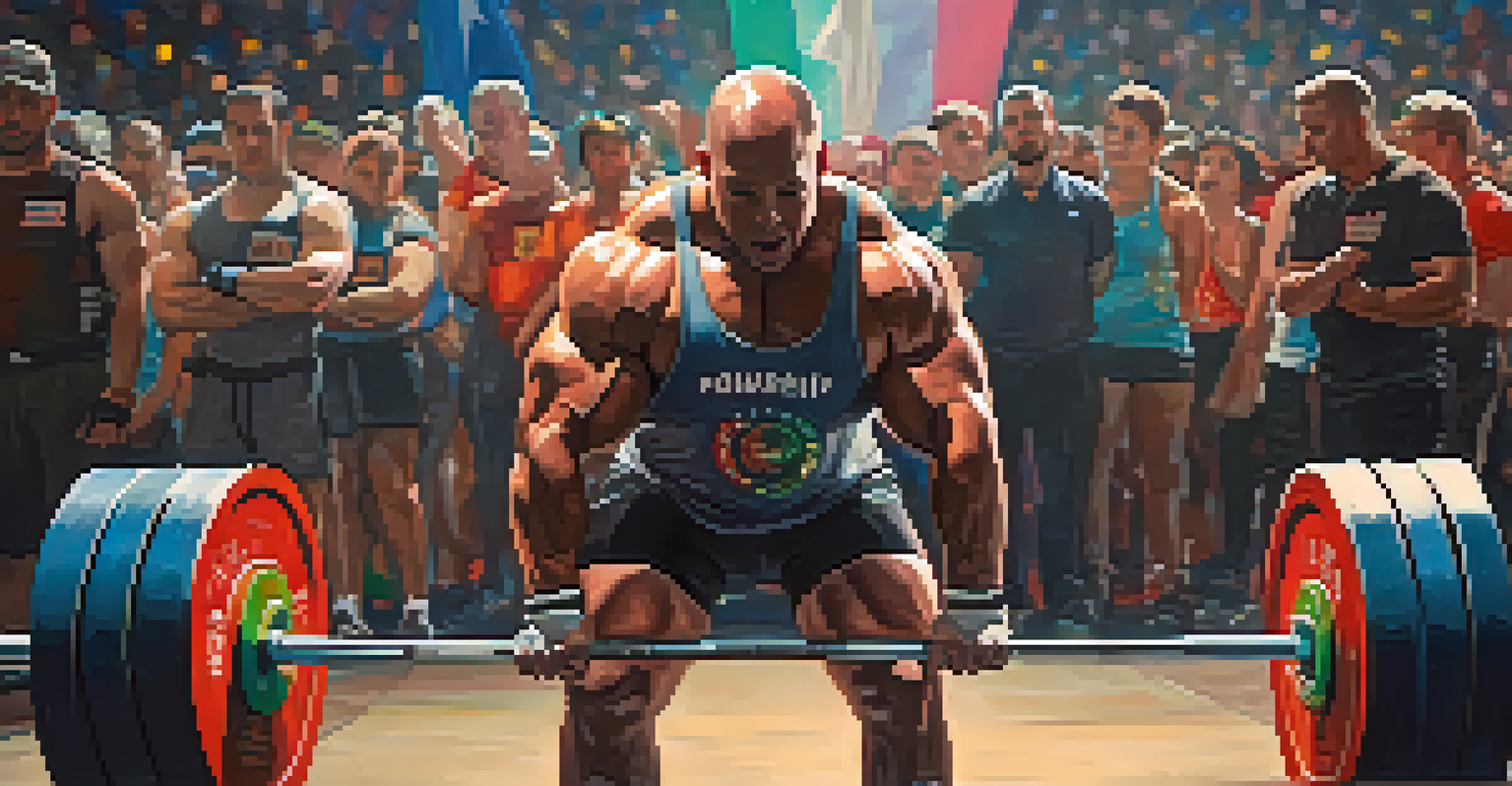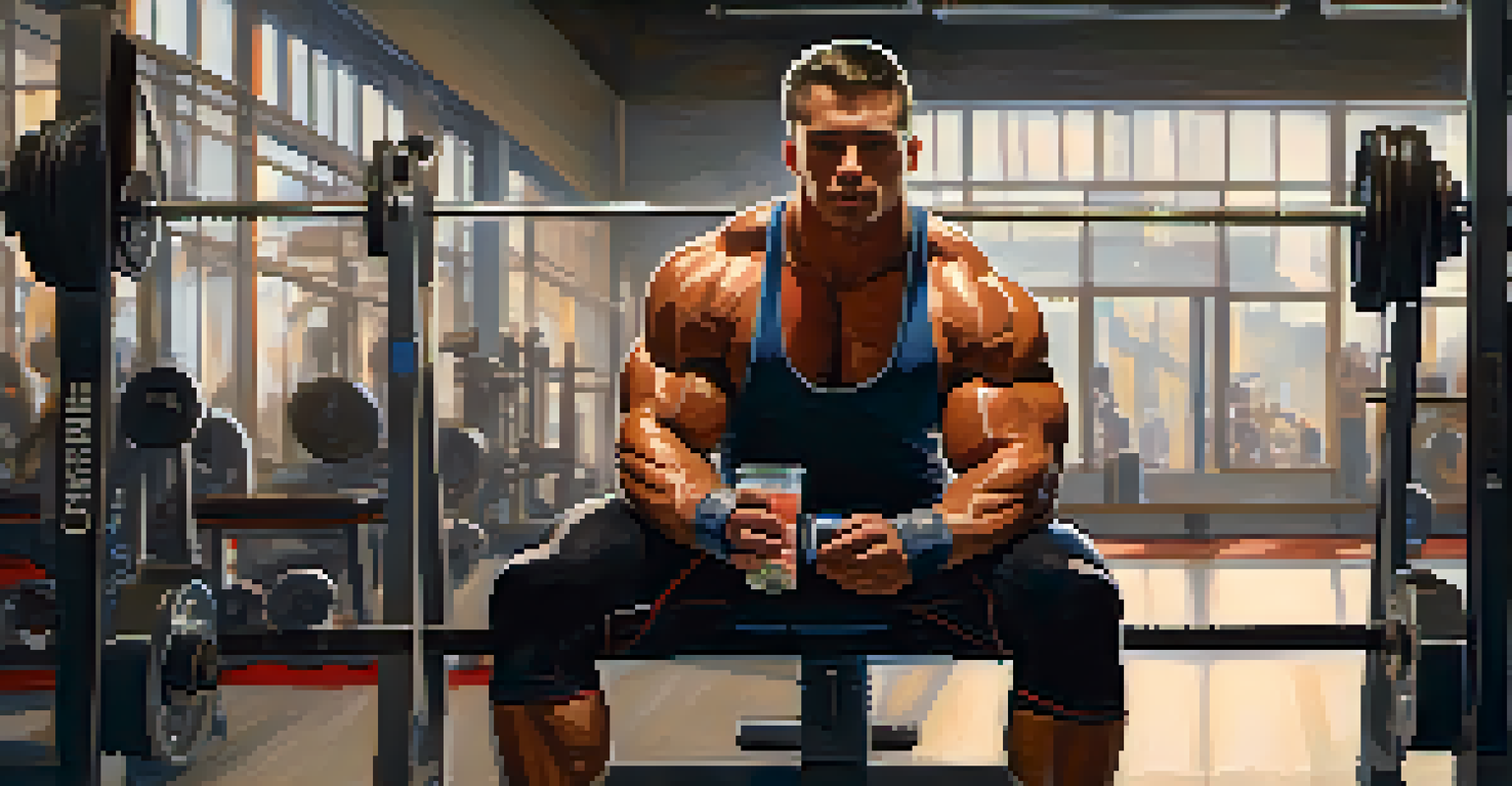The Evolution of Powerlifting Rules Across Different Federations

Understanding Powerlifting: A Brief Overview
Powerlifting is a strength sport that focuses on three main lifts: the squat, bench press, and deadlift. Each lifter competes to lift the maximum weight possible in these categories. This sport has grown tremendously in popularity, attracting athletes from various backgrounds and skill levels, which has led to the need for standardized rules.
Strength does not come from physical capacity. It comes from an indomitable will.
The evolution of powerlifting rules is essential for ensuring fair competition and safety among lifters. Different federations have established their own guidelines, leading to variations that can sometimes confuse newcomers. Understanding these nuances is crucial for athletes aiming to compete effectively.
As powerlifting continues to evolve, so do the rules that govern it. With the rise of social media and global competitions, transparency in these regulations has become vital for the sport's integrity. This article will explore how different federations have shaped the rules of powerlifting over the years.
The Birth of Powerlifting and Initial Rules
Powerlifting as we know it began to take shape in the mid-20th century. Initially, there weren’t many formal rules or federations to oversee competitions, leading to a more freestyle approach. This lack of structure allowed athletes to experiment with techniques, but it also resulted in a chaotic competition environment.

The first formal powerlifting federation, the International Powerlifting Federation (IPF), was established in 1971. The IPF introduced standardized rules to ensure consistency across competitions. This was a significant step in legitimizing the sport and attracting more serious competitors.
Powerlifting's Evolving Rules
The rules governing powerlifting have developed significantly over time to ensure fair competition and athlete safety.
Early rules focused on basic aspects such as lift execution and judging criteria. However, these guidelines were often vague, leading to discrepancies in competition outcomes. As powerlifting gained popularity, the demand for clearer rules became apparent, prompting the establishment of additional federations.
Key Differences in Rules Among Federations
With multiple federations emerging, each began to adopt its own set of rules, which can vary significantly. For example, some federations allow the use of supportive equipment like bench shirts and squat suits, while others do not. This creates a divide between raw and equipped powerlifting, catering to different athlete preferences.
Success is not always about greatness. It’s about consistency. Consistent hard work gains success. Greatness will come.
Additionally, the weight classes and age divisions can differ across federations. This means an athlete’s competitive category might change depending on where they choose to compete. Such variations can be confusing, especially for newcomers trying to find their place in the sport.
Another area of difference is judging standards. While most federations use three judges to evaluate lifts, the criteria for what constitutes a successful lift can vary. This inconsistency can impact athlete performance and even competition results, highlighting the importance of understanding federation-specific rules.
The Role of Technology in Rule Evolution
Technology has played a significant role in the evolution of powerlifting rules. With the introduction of video review systems, federations can now evaluate lifts more accurately. This has led to greater accountability and transparency in judging, helping to reduce disputes over lift validity.
Moreover, advancements in equipment have necessitated changes in regulations. As lifters began using more sophisticated gear, federations had to establish guidelines regarding what is permissible. This ongoing dialogue between innovation and regulation is crucial to the sport's growth.
Federation Differences Matter
Variations in rules across powerlifting federations can create confusion for athletes, particularly in areas like equipment use and judging standards.
Social media has also influenced rule evolution by providing a platform for discussions among athletes, coaches, and federations. Feedback from the community can lead to changes in rules that better reflect the needs and desires of the sport's participants, making it a dynamic and evolving landscape.
Controversies Surrounding Rule Changes
As with any sport, the evolution of powerlifting rules has not been without its controversies. Debates often arise around the legitimacy of certain lifts, the use of equipment, and the fairness of judging standards. These discussions can become heated, reflecting the passion athletes have for their sport.
One notable controversy was the introduction of drug testing protocols, which various federations handle differently. Some federations enforce strict testing, while others have more lenient policies, leading to concerns about fair competition. This discrepancy raises ethical questions about the integrity of the sport.
Such controversies highlight the ongoing struggle to balance tradition with innovation in powerlifting. As the sport continues to grow, the dialogue surrounding rules will likely evolve, aiming to create a fair and inclusive environment for all athletes.
The Future of Powerlifting Rules
Looking ahead, the future of powerlifting rules remains uncertain but promising. As the sport continues to gain popularity, federations will need to adapt to meet the needs of an increasingly diverse athlete population. This could mean more standardized rules across federations to create a more unified competition experience.
Additionally, the integration of technology will likely continue to shape how rules are enforced and evaluated. Innovations such as real-time data tracking could become commonplace, providing insights into lift performance and helping to set benchmarks for future competitions.
Technology's Impact on Rules
Advancements in technology, including video review systems and data tracking, are shaping the future of powerlifting regulations and competition integrity.
Ultimately, the evolution of powerlifting rules is a reflection of the sport's growth and the community's collective voice. Athletes, coaches, and federations must work together to create a framework that allows for fair competition while embracing innovation and change.
Conclusion: The Ongoing Journey of Powerlifting
The evolution of powerlifting rules across different federations mirrors the sport's journey from its informal beginnings to a structured competitive landscape. Understanding these changes is essential for athletes looking to navigate the complexities of powerlifting. As federations continue to refine their rules, it’s important to stay informed and engaged.
The sport's future will depend largely on how well the community can adapt to new challenges and technologies while maintaining the integrity and spirit of competition. By fostering open communication between athletes and federations, powerlifting can continue to thrive and evolve.

Ultimately, powerlifting is more than just lifting weights; it's about building a community united by shared goals and values. As we look to the future, embracing change while honoring tradition will be key to the sport's continued success.